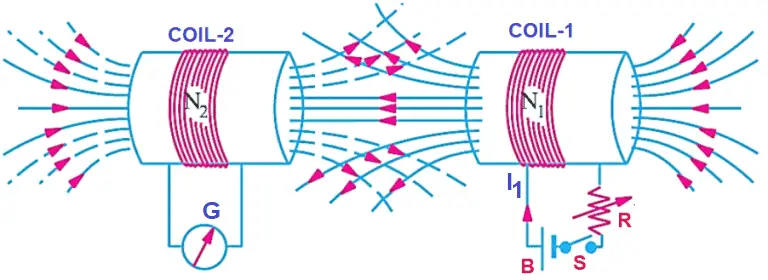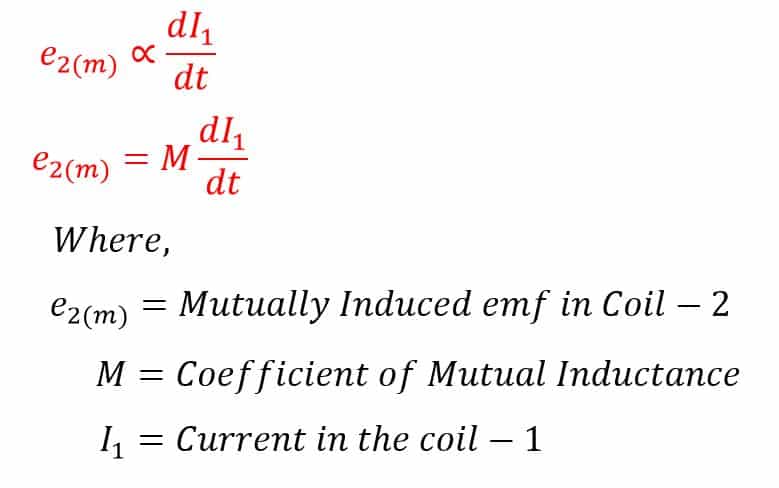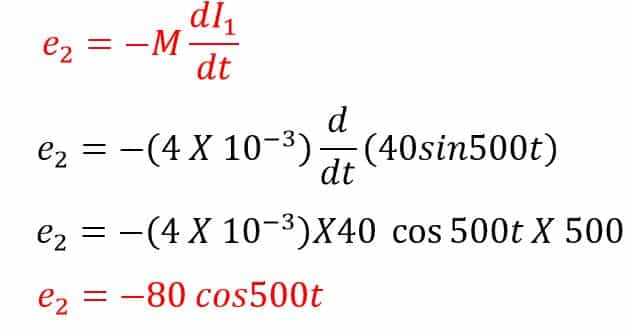Definition: Mutually Induced EMF is the EMF induced in a coil caused by the change of flux produced by another neighboring coil linking to it. There is a wide application of mutually induced EMF. The transformer functions on the principle of mutual induction.
Example to Understand Mutually Induced EMF
We can understand the mutually induced phenomenon by taking the following example.

On closing the switch (S) in the circuit shown above, the current I1 flows through the coil -1, and it produces the fluxφ1. The flux produced in coil-1 links to coil-2. we assume, that most of the flux says φ12 links with the other coil-2.
The change in the flux in coil-1 happens when the current changes. The change in the current can be done through the variable resistor (R). The magnitude of electric current changes with a change in the value of the resistance and it leads to a change in the flux in the coil-1.
This changing flux links to coil-2 and produces EMF. A galvanometer connected in coil-2 measures the induced EMF. The EMF produced in coil-2 is called Mutually Induced EMF.
How Mutually Induced EMF Works (Lenz’s Law)
The direction of induced EMF always opposes the reason for its production. In other words, the direction of the EMF produced in coil-2 opposes the current in coil-1. This phenomenon was proposed by Lenz, and it is called Lenz’s Law.
The direction of the induced EMF is such that it opposes the cause which produces it, which means it opposes the change of current in the first coil. This effect of opposition caused by its own reason of production is called Lenz’s Law.
A galvanometer (G) is connected to coil B for measuring the induced EMF.
Formula of Mutually Induced EMF
The voltage induced in coil-2 depends on the rate of change of the current in coil-1. Therefore,

M is the Constant of Proportionality and is also called Mutual Inductance or Coefficient of Mutual Inductance.
Solved Example of Mutually Induced EMF
The mutual inductance of two nearby coaxial coils is 3mH. If a current (40 A)sin 500t is passed in one of the coils, then find the peak value of induced EMF in the second coil.

The peak value is 80 volts.
Conclusion
Mutually Induced EMF is a fundamental concept in electromagnetic induction, where a changing current in one coil induces an EMF in a neighboring coil. It forms the basic principle behind transformers and many electrical devices.
The magnitude of the induced EMF depends on the rate of change of current and the mutual inductance between the coils. The induced EMF always opposes the cause of its production as per the Lenz’s Law,
Understanding mutually induced EMF is essential for designing efficient circuits, transformers, and other electromagnetic applications.
Related Articles: